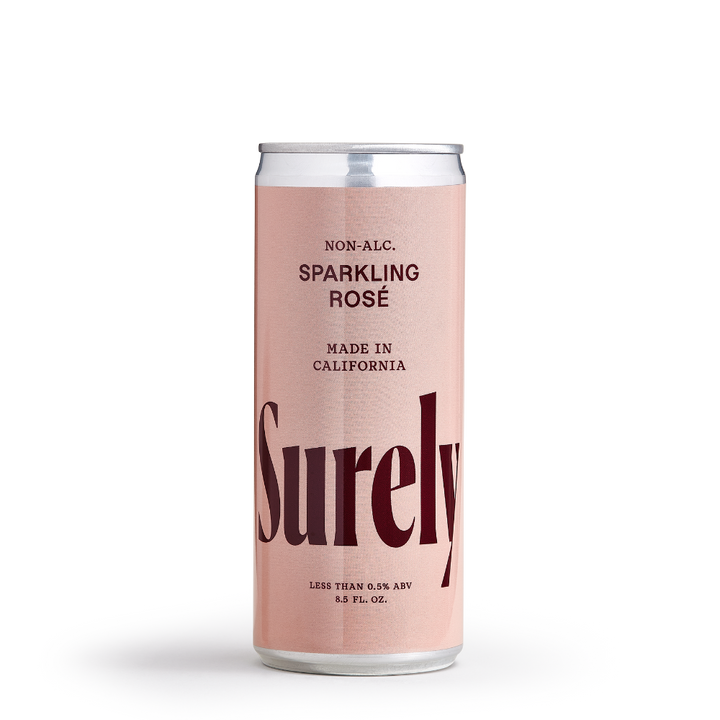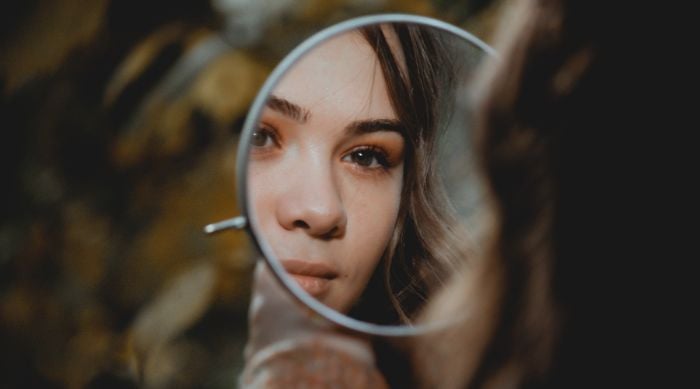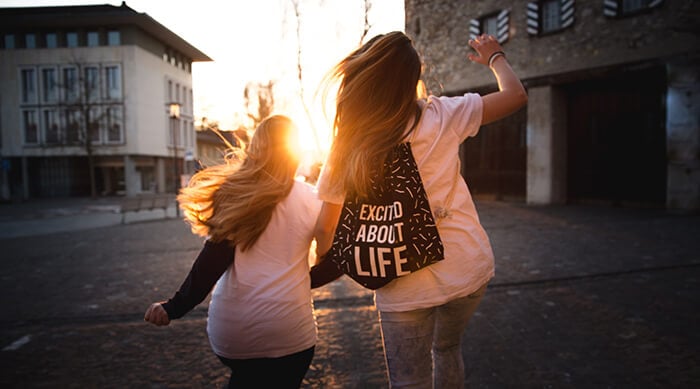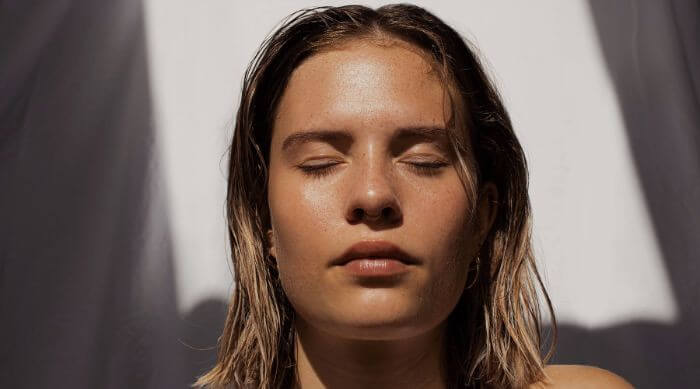Alcoholic face is a broad way to describe facial changes from excessive drinking. Redness, discoloration, and a puffy face are all obvious signs that it may be time to cut back on alcohol.
Fortunately, most skin damage from drinking too much is reversible, but it’s important to understand what’s happening with your skin to kickstart those changes.
Why Excessive Drinking Causes Facial Changes
What causes alcoholic face? Excessive alcohol use causes alcoholic face. Drinking too much alcohol enlarges blood vessels in your face, resulting in facial redness and changes in skin tone and texture.
Over time, excessive alcohol use can also cause liver problems that result in visible physical symptoms like jaundice.
Excessive alcohol consumption includes binge drinking and heavy drinking.
Binge drinking is defined as 4 or more drinks for women or 5 or more drinks for men on one occasion. Heavy drinking is defined as 8 or more drinks per week for women and 15 or more drinks per week for men.
Moderate drinking is defined as a single drink or less per day for women and 2 drinks or less per day for men.
The thing is, even moderate alcohol consumption can affect your face. Alcohol has a mild diuretic effect on the body. Dehydration is a biggie when it comes to dry skin, puffiness, and management of skin conditions like psoriasis or rosacea.
How to Spot Alcoholic Face
Alcoholic face is a series of obvious facial changes from excessive alcohol use. A red face, puffiness, and changes in the look and feel of your skin are all physical signs of too much alcohol.
Redness or Flushing
Redness is one of the most obvious facial signs of excessive alcohol intake, but it can have a few different causes. Alcohol dilates your blood vessels, which can cause temporary redness and a flushed appearance.
Too much drinking can also cause broken capillaries in your face. The result is telangiectasias, or permanent spider veins, in the face, neck, and chest.
A temporary alcohol flush reaction is a little different. Alcohol flush is a type of alcohol intolerance that happens because of an enzyme mutation in the body. People who experience this side effect have a mutation of aldehyde dehydrogenase 2 (ALDH2), a detoxifying acetaldehyde.
Put simply, the body doesn’t handle the alcohol in the same way as drinkers without the mutation. The amount of alcoholic beverages you enjoy really doesn’t matter if you’re intolerant to alcohol, so that glass of wine could be enough to cause your face to flush.
Puffiness
Alcohol dehydrates your skin. It can also affect your sleep, increase inflammation in the body, and cause weight gain if you’re not careful about calories in those umbrella drinks. All of that is a recipe for a puffy face and bloating.
How do you get rid of puffy face from alcohol? You can get rid of puffy face from alcohol by drinking water, getting plenty of rest, and applying a cold compress to puffy areas. Cutting back on alcohol and your salt intake can help, too.
Alcoholic Eyes
What are alcoholic eyes? Alcoholic eyes are red, irritated, bloodshot eyes. This is thanks to the same enlarged blood vessels that cause facial redness. Alcohol also affects your sleep, resulting in dark circles, puffy eyes, and worsened hangover symptoms.
A more serious side effect of heavy drinking is a yellowish tint in the whites of your eyes. This is a sign of jaundice and the beginnings of liver disease or cirrhosis.
Jaundice causes a yellow tint to the skin and the whites of your eyes because of a buildup of bilirubin in the body. Bilirubin is a yellowish compound made in the normal breakdown of red blood cells. When your liver isn’t working as it should, it can cause high levels of this substance.
Changes in Skin Texture
Alcohol causes dehydration in the body. When you’re dehydrated, that can show up on your face in the form of dry, flaky skin, more visible signs of aging, or flare-ups of skin conditions like psoriasis and eczema.
A lack of sleep thanks to alcohol use can also contribute to skin problems like itchy skin, rashes, and acne breakouts, and a weakened immune system. Changes to your immune system don’t just put you at risk for chronic health issues.
They can make it harder for your body to produce collagen, a key component of healthy skin cycles, and for your skin to heal after any kind of trauma. Persistent skin sores and skin infections are more common in people with weakened immune systems.
Changes in Skin Tone
Indulging in too many alcoholic drinks can result in dull, tired-looking skin. This is mostly due to the way alcohol affects collagen production and triggers inflammation within the body.
More significant changes in skin tone or a yellowing skin tone could be a sign of jaundice and progressing liver damage or hepatitis.
Non-Alcoholic Sparkling Brut

$24.99
Award-winning alcohol-removed bubbly white. Hints of apple, pear, honey and citrus notes. Better than champagne.TASTING NOTES: The vibrant combination of apple, pear, honey and citrus notes intertwined with a crisp backbone. The acid and sweet notes of the fruit pair… Read More
Can the Effects Be Reversed?
Some effects of alcoholic face, like spider veins, can’t be reversed without cosmetic procedures like laser therapy. Treating other skin effects requires getting to the root of the issue. In the case of alcoholic face, it’s all about cutting back on drinking alcohol.
As you detox from alcohol, get lots of rest, drink plenty of water, and eat a solid diet. Use gentle skincare products as your face gets used to your new routine. Limit stress triggers to improve your health health. Talk to your doctor or dermatologist about existing skin conditions.
Other Causes of Alcoholic Face
Watching for physical signs of alcoholism or alcoholic face is easier when you know you or a loved one have been drinking too much. You can’t assume the same about everyone you see with a red or puffy face.
Other causes of facial changes include:
- Lack of sleep: Better sleep is a big benefit of drinking less, but there could be other obstacles to high-quality sleep. Stress, a lack of exercise, and even what you do to get ready for bed are all important for improving sleep.
- Dehydration: Drinking plenty of water and replenishing your body with electrolytes after heavy workouts is a great way to maintain elasticity and your skin’s hydration.
- Poor diet: A bad diet can also cause water retention, bloating, and puffiness. Any heart-health benefits of adding red wine to your diet probably aren’t worth it for your overall wellness. Opt for fiber, lots of fresh produce, and whole grains.
- Allergic reactions: Allergies to alcohol and alcohol intolerances are real, but your skin health problems could also be the result of food or other allergies. Rashes like contact dermatitis, for example, are the result of coming into contact with allergens or irritants.
- Hormonal changes: Your skin and your hormones are closely connected. Your body produces less collagen the older you get, even if you don’t touch alcohol. Natural hormonal changes like menopause can also wreak havoc on your skin.
- Underlying illness: Alcohol increases your chances of developing skin conditions like psoriasis. It can also cause skin flare-ups. That doesn’t mean alcohol is the only cause of skin conditions. They could be an underlying illness at play.
Curious About Going Sober?
Withdrawal symptoms like cravings and serious skin concerns like jaundice and permanent facial redness are obvious signs of an alcohol use disorder. If you or a loved one are at risk for alcohol addiction, addiction treatment is out there:
If you just want to cut back on your drinking or are sober curious, find ways to have fun and hang out with your friends that don’t include drinking. Alcohol alternatives like Surely non-alcoholic wine are a great way to give your skin a break while sipping on something delicious.
If you want something pink, start with Surely’s non-alcoholic sparkling rosé. It comes in cans, too, for crisp berries and pear on the go.
Non-Alcoholic Sparkling Rosé Can 4-Pack

$24.99
Dry non-alcoholic California sparkling rosé with crisp, light notes of strawberry, peach & raspberry. Rosé all day without the hangover.TASTING NOTES: Flavors of soft strawberry, peach, and raspberry notes are balanced with a light acid for a full finish. FOOD… Read More
Sources
- Effect of alcohol on endothelial function in healthy subjects
- The effects of alcohol and illicit drug use on the skin
- Impact of Smoking and Alcohol Use on Facial Aging in Women: Results of a Large Multinational, Multiracial, Cross-sectional Survey
- Diagnosis and evaluation of hyperbilirubinemia
- Impact of Alcohol Abuse on the Adaptive Immune System
- Sensitive skin and the influence of female hormone fluctuations: results from a cross-sectional digital survey in the Dutch population






![What Happens When You Stop Drinking [Timeline + Benefits]](https://dropinblog.net/34240221/files/featured/what-happens-when-you-stop-drinking.jpg)